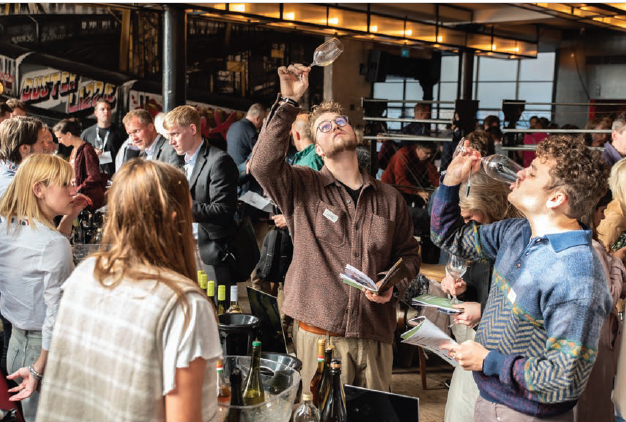‘I have always known the potential of Ornellaia’
After recently announcing his retirement, outgoing Ornellaia CEO Giovanni Geddes speaks to db about how the Super Tuscan producer has evolved over his 24 year tenure, and why climate change is the gravest threat to the future of Italian fine wine.

Geddes announced his retirement in Venice last month at the 15th edition of Ornellaia Vendemmia d’Artista, stating that he would step down from the role at the end of the year. His replacement is yet to be announced.
He joined Tuscan wine giant Frescobaldi in 1996, having previously worked with Rémy Martin and Antinori. In 2005 he managed Frescobaldi’s acquisition of Tenuta Dell’Ornellaia from Constellation Brands, having become Ornellaia CEO in 1999.
Speaking about what drew him to Bolgheri, Geddes said: “I have always known the potential of Ornellaia and the uniqueness of its terroir. It was only needed to put the pieces together in a long term vision to make it happen.”
During his almost quarter century at the helm, Geddes has overseen significant developments.
“It has changed quite a bit, starting from the fact that we have decided to separate Masseto from Ornellaia to give both fine wines the opportunity to pursue their own path,” he explained. “It was a challenge that required time. In 2009, Masseto became the first Italian wine to debut on La Place de Bordeaux (with the 2006 vintage), Ornellaia followed not long after.”
“On the other hand, Ornellaia continued its ascension as a great wine of the world being distributed today in 95 markets. We have created the charity project of Ornellaia Vendemmia d’Artista that, as of 2009, supports the world of arts and most important, the access to art. More specifically, since 2019 we have decided to support the development of the Mind’s Eye program of the Guggenheim Foundation, which allows low-vision persons and the blind to access art. Ornellaia is one of the Guggenheim’s five global partners.”
“Among other things, Ornellaia Bianco came into existence, a white wine that since its debut vintage, 2013, has been positioned at the pinnacle of the estate’s winemaking with the same leading status as the flagship red.” db attended a vertical tasting of Ornellaia Bianco in London last year.
One major change for the Super Tuscan producer this year has been the departure of estate director Axel Heinz, who has gone to join Château Lascombes in Margaux.
Partner Content
“There will be a re-organisation of the roles within the company, which is normal, because we always need to re-adapt in order to remain leaders in our industry,” Geddes shared. “Ornellaia will have a production director and a winemaker that will complete the technical team in Ornellaia. What will remain the same is the style of our wines which will reflect the terroir we have here. We have the style of Ornellaia and the style of Masseto and every person in our team has this is mind.”
Marco Balsimelli, previously a consultant oenologist with Eric Boissenot, has been named as the new production director for Ornellaia and Masseto.
When asked what has prompted his decision to retire now, Geddes said: “I have dedicated all my life to working. At my age, I think it’s time to slow down and dedicate myself to other activities that fulfil my life.”
“From my perspective, Italian fine wines will continue growing as today all markets recognise their exceptional quality and unique identity. It’s enough to read about the performance of fine wines. Italian wines are always in the top three most sought after.”
“However,” Geddes warned, “the environmental aspect remains a challenge with the climate change consequences. Every producer should get informed and take measurements against this issue.”
The 2023 vintage has been one marked by weather extremes across Italy, from Piemonte to Sicily, and in Tuscany there have been similar problems for the vines, according to Geddes: “Here in Bolgheri, extreme temperatures or hazards as hail or frost are still relative.”
However, Geddes believes that Ornellaia is prepared to deal with these climatic challenges.
“However, we work with a prevention approach with the technology which is mainly used to generate accurate vineyard maps that help us understand better the variations of vine growths and ripening within the same parcel. We use several tools, such as vigour maps through infrared imagery, resistivity maps, several measures of water stress etc,” he explained. “For the rest, we try to react to heat and drought through ‘down to earth’ vineyard practices, such as mulched green covers between the rows, lower canopies, and little leaf removal in the fruit zone.”
db recently looked into the long-term viability of Italian viticulture as a whole due to the increasing extremity of the country’s weather.
Related news
Castel Group leadership coup escalates
For the twelfth day of Christmas...
Zuccardi Valle de Uco: textured, unique and revolutionary wines




